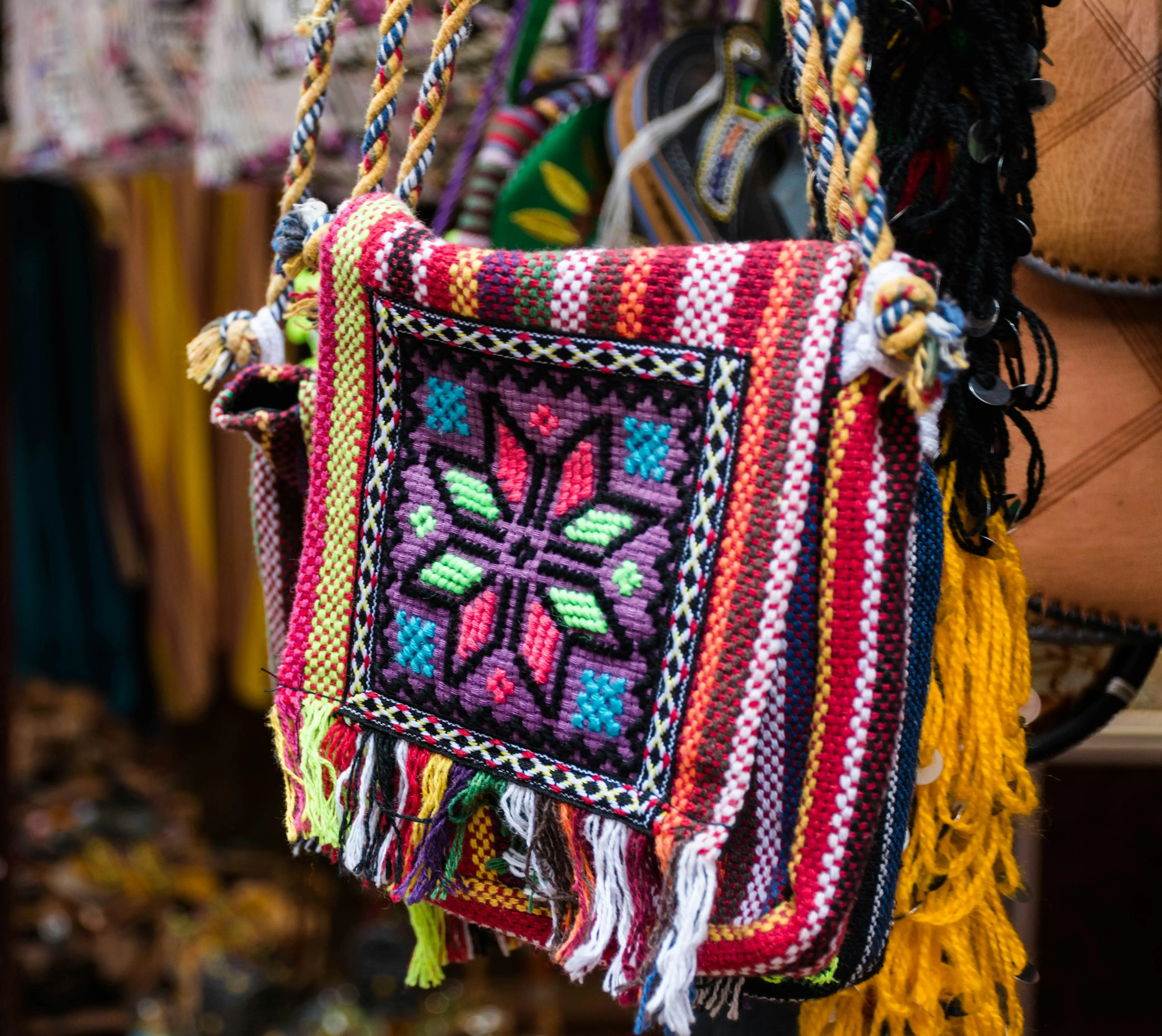Berber Culture and Desert Nomadic Traditions: A Deep Dive into Morocco's Indigenous Heritage
The Berber people, who call themselves Amazigh (meaning "free people"), represent the indigenous soul of North Africa. Their culture, traditions, and way of life have flourished in the Sahara Desert and Atlas Mountains for over 4,000 years, creating one of the world's most resilient and fascinating civilizations.
This comprehensive guide explores the depth and richness of Berber culture, from ancient traditions to modern preservation efforts.
Understanding the Amazigh People
Origins and History
Ancient Roots:
The Amazigh people are the indigenous inhabitants of North Africa, with archaeological evidence dating back to 10,000 BCE. They developed sophisticated societies long before the Arab conquest and have maintained their distinct identity through various historical periods.
Historical Timeline:
- 10,000 BCE: Early Berber settlements in North Africa
- 3000 BCE: Development of distinct Berber cultures
- 1200 BCE: Berber kingdoms and confederations emerge
- 700 CE: Arab conquest brings Islamic influence
- 11th–12th centuries: Berber dynasties (Almoravids, Almohads) rule Morocco and Spain
- 20th–21st centuries: Cultural revival and official recognition
Geographic Distribution:
Today, approximately 40–50 million Amazigh people live across North Africa, with the largest populations in:
- Morocco: 8–10 million (about 40% of the population)
- Algeria: 9–10 million
- Libya: 600,000
- Tunisia: 500,000
- Mali, Niger, Burkina Faso: Various smaller populations
The Three Main Berber Groups in Morocco
Riffians (Tarifit speakers)
- Location: Northern Morocco, Rif Mountains
- Characteristics: Maritime and mountain culture
- Traditions: Fishing, agriculture, and mountain crafts
- Language: Tarifit (northern Tamazight dialect)
Middle Atlas Berbers (Tamazight speakers)
- Location: Middle Atlas Mountains (Ifrane, Azrou)
- Characteristics: Cedar forest dwellers, seasonal migration
- Traditions: Shepherding, carpet weaving, woodworking
- Language: Central Tamazight dialect
Souss Berbers (Tashelhit speakers)
- Location: Anti-Atlas Mountains and Souss Valley
- Characteristics: Agricultural and trading communities
- Traditions: Argan oil production, silver work, architecture
- Language: Tashelhit (southern Tamazight dialect)
Desert Berbers (Hassaniya and Tamazight speakers)
- Location: Sahara Desert regions, including Merzouga
- Characteristics: Nomadic and semi-nomadic lifestyle
- Traditions: Camel herding, desert navigation, oral poetry
- Language: Mixed Arabic-Berber dialects
Language and Communication
Tamazight: The Berber Language
Official Recognition:
In 2011, Tamazight became an official language of Morocco alongside Arabic.
Language Characteristics:
- Ancient script: Tifinagh, used for over 2,500 years
- Oral tradition: Emphasis on storytelling
- Dialects: Three main dialects in Morocco
- UNESCO Status: Recognized as intangible cultural heritage
Common Tamazight Phrases:
- Hello: Azul (AH-zool)
- Thank you: Tanemmirt (tah-nem-MIRT)
- Peace be with you: Assalamu alaykum (shared with Arabic)
- How are you?: Mamek? (mah-MEK)
- Good: Igerrez (ee-ger-REZ)
- Water: Aman (ah-MAHN)
- Bread: Aghrum (ahg-ROOM)
Oral Tradition and Storytelling
Epic Poetry and Tales:
Berber culture maintains one of the world's richest oral traditions.
Types of Oral Literature:
- Historical epics: Stories of tribal heroes and battles
- Folk tales: Moral lessons and entertainment
- Poetry: Love songs, work songs, ceremonial verses
- Proverbs: Wisdom sayings for daily life
- Genealogies: Family and tribal histories
The Storyteller Tradition:
Professional storytellers, or rawi, travel between communities, preserving oral heritage.
Traditional Desert Nomadic Lifestyle
The Nomadic Calendar
Seasonal Migration Patterns:
Nomads follow ancient routes based on water, grazing, and weather.
Winter (Dec–Feb):
- Location: Lower desert areas
- Activities: Crafting, storytelling, repairs
- Social: Festivals, marriages
- Challenges: Cold, limited water
Spring (Mar–May):
- Location: Toward pastures
- Activities: Camel breeding, plant gathering
- Opportunities: Ideal weather for trade and travel
Summer (Jun–Aug):
- Location: Oases or high altitudes
- Activities: Date harvest, tourism crafts
- Challenges: Extreme heat, water scarcity
Autumn (Sep–Nov):
- Location: Return migration
- Activities: Winter prep, equipment collection
- Social: Harvest festivals
Traditional Desert Dwellings
The Khaima (Tent):
A practical, centuries-old desert home.
Construction and Materials:
- Frame: Wooden poles
- Covering: Goat/camel/sheep hair
- Ropes: Palm fiber or animal hair
- Pegs: Wooden stakes
Design Features:
- Wind resistance
- Ventilation & heat control
- Waterproof: Woven hair swells when wet
- Portability: 30-minute setup
Interior Layout:
- Men’s side: Guest area
- Women’s side: Family, domestic tasks
- Cooking area: Central or separate tent
- Storage: Woven bags
- Sleeping: Carpets and blankets
Water Culture and Desert Survival
Water as Sacred:
Water is both spiritual and vital.
Traditional Water Management:
- Ghettara systems
- Rainwater collection
- Spring protection
- Conservation rituals
Desert Navigation:
- Stars
- Wind patterns
- Landmarks
- Animal behavior
Traditional Arts and Crafts
Textile Arts: Carpet and Rug Weaving
Berber carpets vary by region and purpose.
High Atlas Carpets:
- Colors: Natural wool tones
- Patterns: Geometric, symbolic
- Use: Floor, tent, wall
Middle Atlas Carpets:
- Colors: Bright, warm
- Patterns: Diamond, tribal
- Use: Weddings, status
Desert Region Textiles:
- Colors: Earthy
- Materials: Camel, goat, sheep wool
- Function: Tents, clothes, bags
Symbolism in Patterns:
- Diamonds: Protection
- Zigzag: Life, water
- Cross: Directions, harmony
- Hand symbol: Blessing
- Animals: Fertility, strength
Jewelry and Metalwork
Silver Jewelry:
Berber jewelry is symbolic and practical.
Key Pieces:
- Fibulas: Brooches
- Bracelets & rings: Engraved
- Necklaces: Multi-strand
- Headpieces: For special events
Cultural Meaning:
- Status
- Spiritual protection
- Life milestones
- Heirlooms
- Trade currency
Craft Techniques:
- Repoussé
- Filigree
- Granulation
- Stone setting (coral, amber, etc.)
- Engraving
Musical Traditions
Instruments:
- Drums: Bendir, darbouka, taarija
- Percussion: Qraqeb (metal castanets)
- Strings: Oud, ginbri, rebec
- Winds: Flute, gasba, zurna
Music Styles and Uses:
- Work Songs: Herding, harvest, crafts
- Travel Songs: Long desert journeys
- Ceremonial Music:
- Weddings
- Religious events
- Coming-of-age
- Healing rituals
Contemporary Berber Culture and Preservation
Modern Challenges
- Urban migration threatens traditional lifestyles
- Cultural preservation efforts include:
- Language recognition
- School programs
- Cultural tourism
- Arts and music funding
Cultural Identity Today
- Tradition vs Modernity: Youth navigating dual identities
- Global Berber Diaspora: Cultural links through diaspora communities, online spaces, and return visits
Conclusion: The Enduring Spirit of the Amazigh
For over 4,000 years, the Amazigh have preserved their identity, language, and customs while adapting to ever-changing environments. Their wisdom in sustainable living, oral traditions, and community resilience stands as a powerful testament to human adaptability.
Visitors to Morocco gain a rare opportunity to experience this living heritage firsthand—from the warmth of Berber hospitality to the symbolism in every woven carpet or story told under the stars.
Experience the living culture of the Amazigh people – discover Morocco's indigenous heart in the timeless landscapes of the Sahara.



